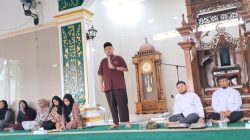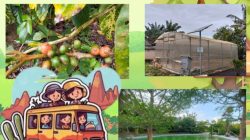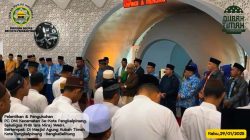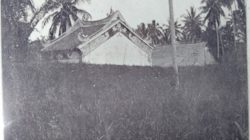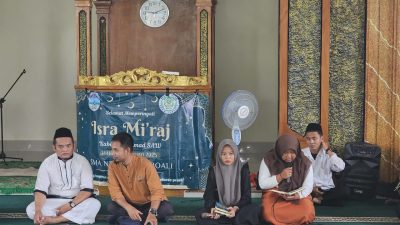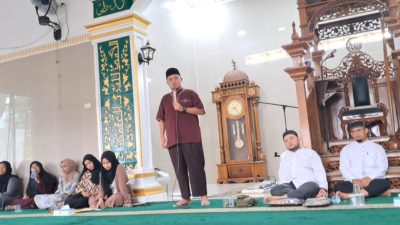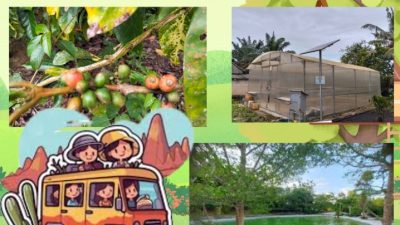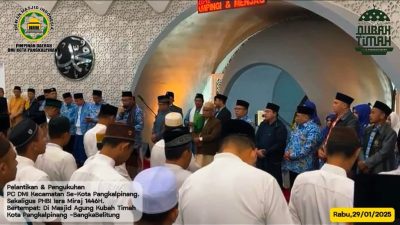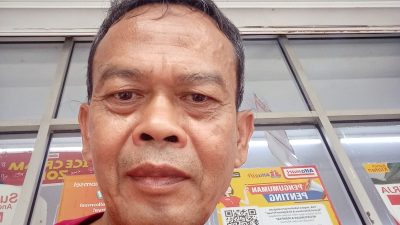Reported by Ali Usman, Pamong Budaya in the Department of Tourism, Culture and Youth and Sports Affairs of Bangka Belitung Island
Translator by : Siti Afrinda Syelsega, S.Hum
Bekaespedia.com _ do you know there is a tribe called “Lom” or “Mapor”? In Bangka Belitung, only by hearing those names could scare people away, let alone meeting them in person. They said “Lom” or “Mapor” people lives in their own mysterious world, black or white, and they are not friendly to strangers. It turns out that the stereotype is not right at all. As long as we respect and appreciate them, “Lom” or “Mapor” people are mostly welcome. They are the ones who faithfully uphold old beliefs and still continue to preserve the original culture in Bangka. Let’s get to know them better!
Traditional Territory
Mapor Traditional Territory is called “Karang Lintang”, running from the north to the south, with natural boundaries in the northern part of areas named Tanjung Penyusuk-Pesaren-Mengkudu-Tanjung Samak; and in the eastern part, it starts from areas named Tanjung Samak-Pejem-Tengkalat-Tuing-Muara Sungai Mapur, with natural coral rocks and hills along Tengkalat-Tuing areas. The land area is bordered with Belinyu in the west and Sungailiat in the south.
According to an article entitled De Orang Lom Of Belom Op Het Eiland Banka (1862), it described the distribution of Lom people in the districts of Muntok (Berang Jering Onderdistrict Kediala), Belinjoe (Aik Abik, Penegar, Aik Bakem) and Soengeiliat (Mapor, Penyamun, Sembuang). Schets Taalkaart van de Residentie Bangka map by K.F. Holle (1889) identified the distribution of people who spoke Mapor language (Maporeesch) and Mapor Darat Dialect (Maporeesch met Daratsch) in most of Belinjoe district including Belinjoe and Pandji Sekah districts. There was only a small part which was in the Soengeiliat District, specifically around the Mapur River. In 1891, Captain L.-J. Zelle mentioned the existence of Mapor people who lived on the banks of Mapur River and in the surrounding forest. Meanwhile, Olaf Smedel’s (1991) research focused more on Aik Abik and Pejem.
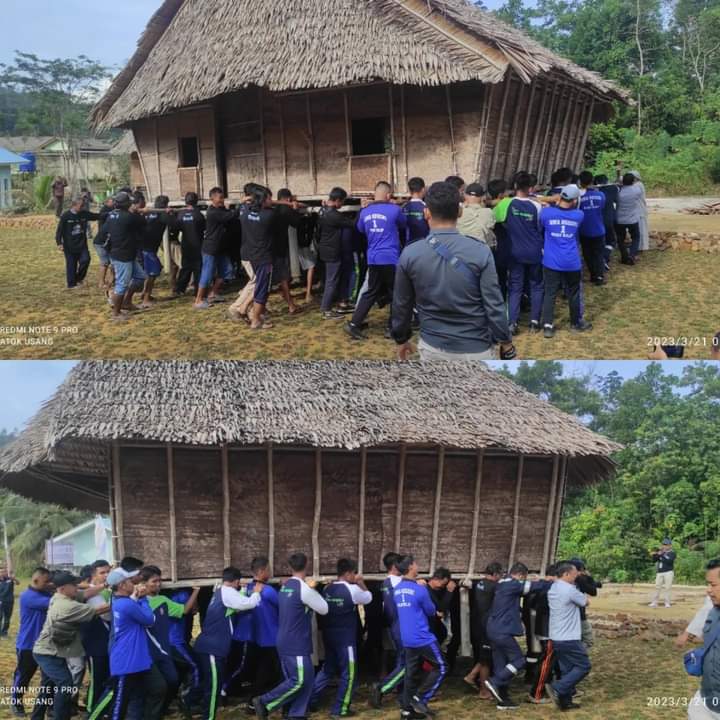
Mapor traditional territory was getting smaller because of the opening of tin mines in Pangkal Mapur since the British era and followed by the Dutch and Indonesians in the Bubus, Lubuk Lesung, Pesaren and Telang areas. Mining worker settlements from China in there developed and opened up opportunities for cultural acculturation. The second factor was the opening of oil palm plantations in the early 1990s and has been ongoing until today. Now, the remaining Customary Forest is in the hills and is included in the Production Forest area. This cannot be separated from the threat of plantations by companies.
Indigenous Community
Mapur people consist of two groups, which are people who have converted to religion (“Lah”) and people who still maintain their beliefs of Mapor Dangkel (“Lom”). Mostly “Lah” people have moved to many areas, either to villages or to cities, marrying non-Mapor people and working in various sectors. There are some of them who even became big or respected figures. Mapor Dangkel believers are concentrated in 2 areas, namely Pejem Area, Gunung Pelawan Village and Air Abik Area, Gunung Muda Village. Both are in the Belinyu sub-district, Bangka Regency.
In Pejem Village, Mapor people are divided into two areas, Pejem and Benak. In Pejem, the people live along the coast, from Pesaren to Tengkalat river, alongside with Tuing area. Most of people there are farmers, only a few of them are fishermen. In general, Pejem people are more open. They use public facilities built by the government, and their houses are permanent. Meanwhile, Mapor people who live in Benak are more isolated from any development. Benak is located in the Production Forest of Mount Pelawan and can only be reached by two-wheeled vehicles. Most of people there are farmers and still maintaining their nomadic farming tradition. In 2014, the population who adhered to the belief in God Almighty in Pejem Area was 142 people.
Mapor people who live in Air Abik Area, Gunung Muda Village, are materially more established than other Mapor people because they are supported by tin mining and palm oil plantations, but religiously they are holding on to the traditional teachings of Mapor Dangkel. In 2014, there were 280 people with beliefs in Air Abik Villager, and it decreased to 208 people in 2021, consisting of 73 families, 133 males and 75 females. Amongs those 208 people, only 89 people or 25 family had written their religion in their ID Cards.
Mapor people in Riau Silip sub-district area are spread across Tuing Area, Mapur Village. Located on the coast, some of the residents earn their living as farmers and fishermen.
Mapor people, both with religions and with beliefs, naturally live side by side, respect each other and work together to build the village. They areall are equal in the eye of law and state administration.

Customary Law
The Norm System of Mapor, called “Pantang Larang”, regulates many areas including human relations with forests and nature, farming, activities in rivers and in the sea, relations between humans and animals, art, behavior, daily life and traditional medicine. However, the enforcement of this customary law has currently been weak due to the narrowing of customary areas, and it has not been legalized in official regulations.
Traditional Institution
The Mapor Traditional Institution is a community organization that houses tMapor people, both those who still adhere to the belief in God Almighty (Mapor Dangkel) and those with religions. This institution aims to preserve Mapor culture and houses people who are still with beliefs. Its existence has been recognized by the Government of the Republic of Indonesia through the Directorate General of Culture of Ministry of Education and Culture with Inventory Mark Number: 0220/F2/KB/2021 dated March 12, 2021. It is also written in the Registration Certificate of Faith Leader Number 0680/F2/KB.02.03/2021 dated May 31, 2021 in the name of Gedoi as the Traditional Leader. This organization operates in the fields of social, cultural, nature conservation, youth, religion, belief, education and economics.
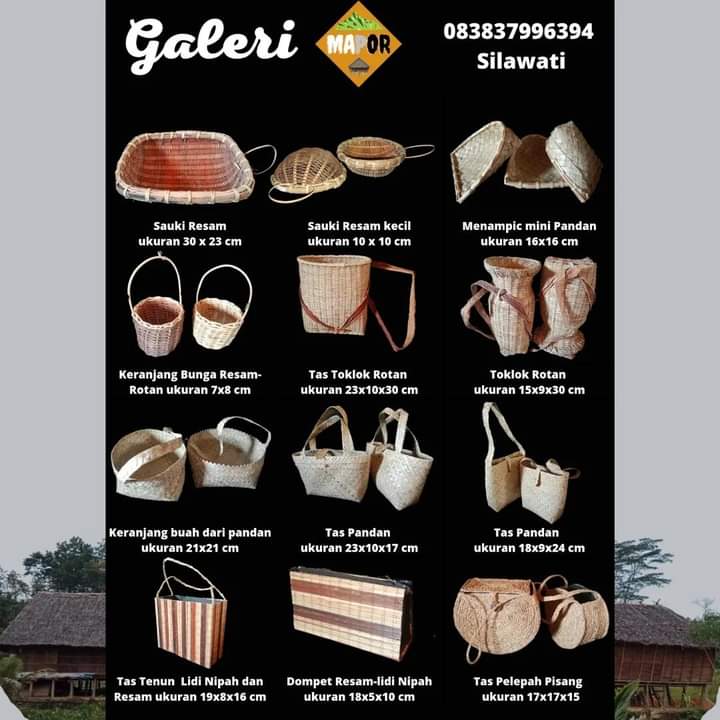
Nowadays, Gebong Memarong Traditional Village has been built for educational and cultural tourism purpose. If you are interested in learning Mapor culture, please contact the manager; Asih Harmoko (082279418820)and Ade Firmansyah (082177379462).
However, when you are in there, please behave wisely and do not litter, okay?



